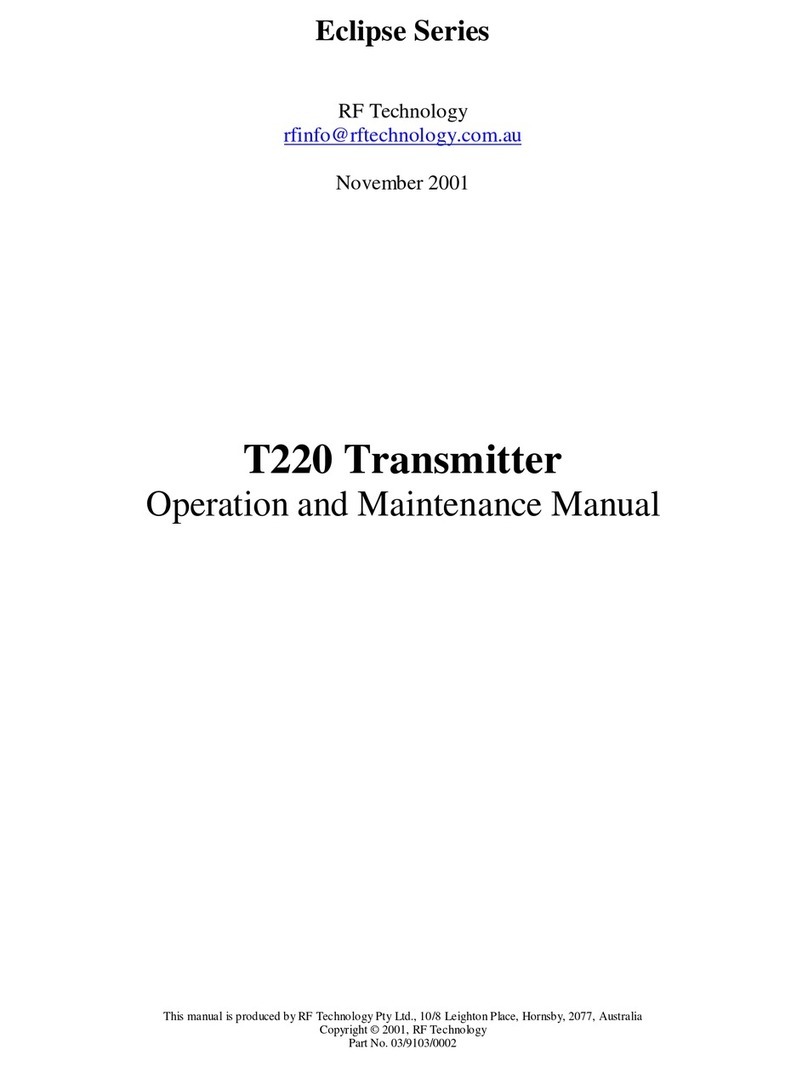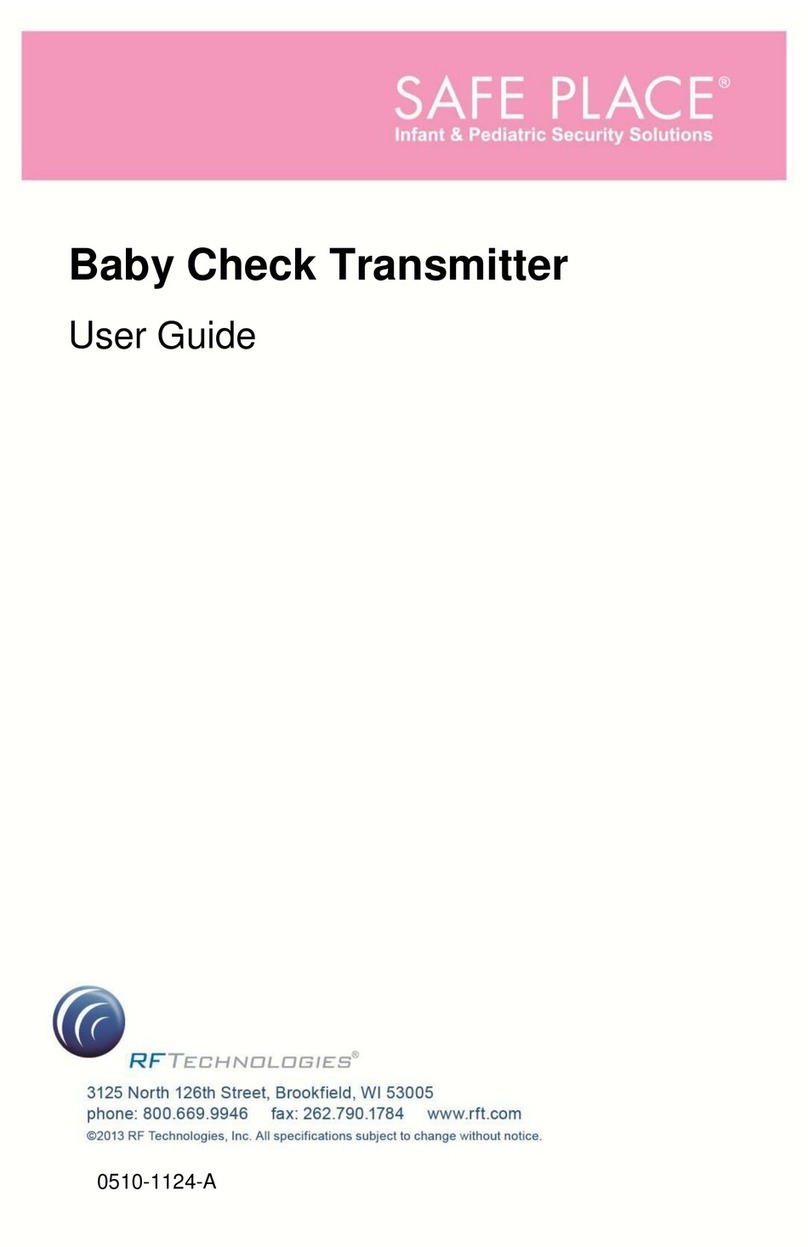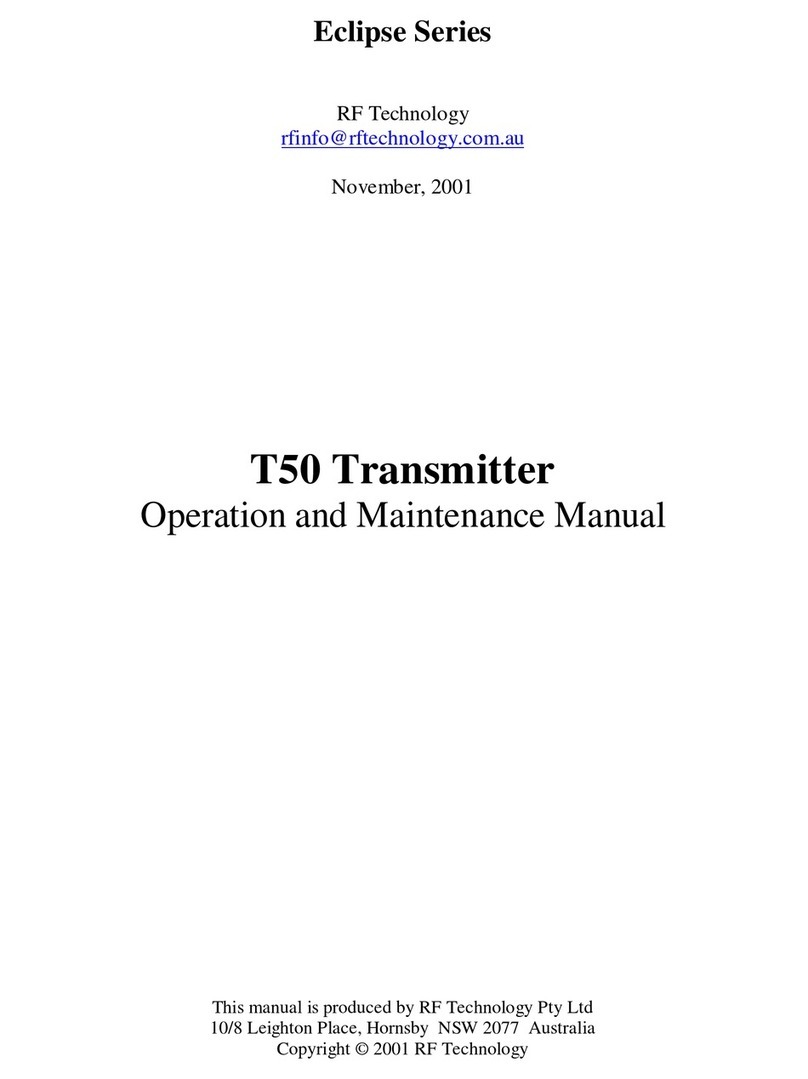
Warnings and Cautions
Safe Place Transmitters User Guide Page 5 of 36
0510-1121-G
SYSTEM MAINTENANCE AND TESTING—It is the
responsibility of the facility to establish and facilitate a
regular maintenance schedule for your system, as
outlined in the applicable system guides. This includes
regular inspection, testing, and cleaning. RF
Technologies, Inc. recommends monthly maintenance
and testing of your system. It is also recommended that
your facility keep records of maintenance and test
completions.
Failure to provide regular maintenance and testing
of these products may result in equipment and/or
system failure.
USER TRAINING—Only users who have received
adequate training on the use of the system, as outlined
in this manual, should use the system. It is the
responsibility of the facility to ensure all users have been
trained.
Failure to adequately train employees may cause
system failure due to user error. In addition,
incorrect use of the equipment may also result in
system failure.
MR UNSAFE
All RF Technologies transmitters, pendants and banding
material “PRODUCT” have been determined to be MR
Unsafe as defined by ASTM F 2503-05. Use of
“PRODUCT” in a Magnetic Resonance Imaging system
will cause injury to residents and staff, MR system
malfunction or “PRODUCT” malfunction. Do not bring
“PRODUCT” into the MR system area and follow your
facilities policies to classify and label “PRODUCT” as
MR Unsafe.
DISPOSAL—At the end of their service life the products
described in this manual, as well as accessories (i.e.
lithium batteries, banding material, disposable pads,
etc.), must be disposed of in compliance with all
applicable federal, state and local guidelines regulating
the disposal of products containing potential
environmental contaminants. Dispose of the packaging
material by observing the applicable waste control
regulations































